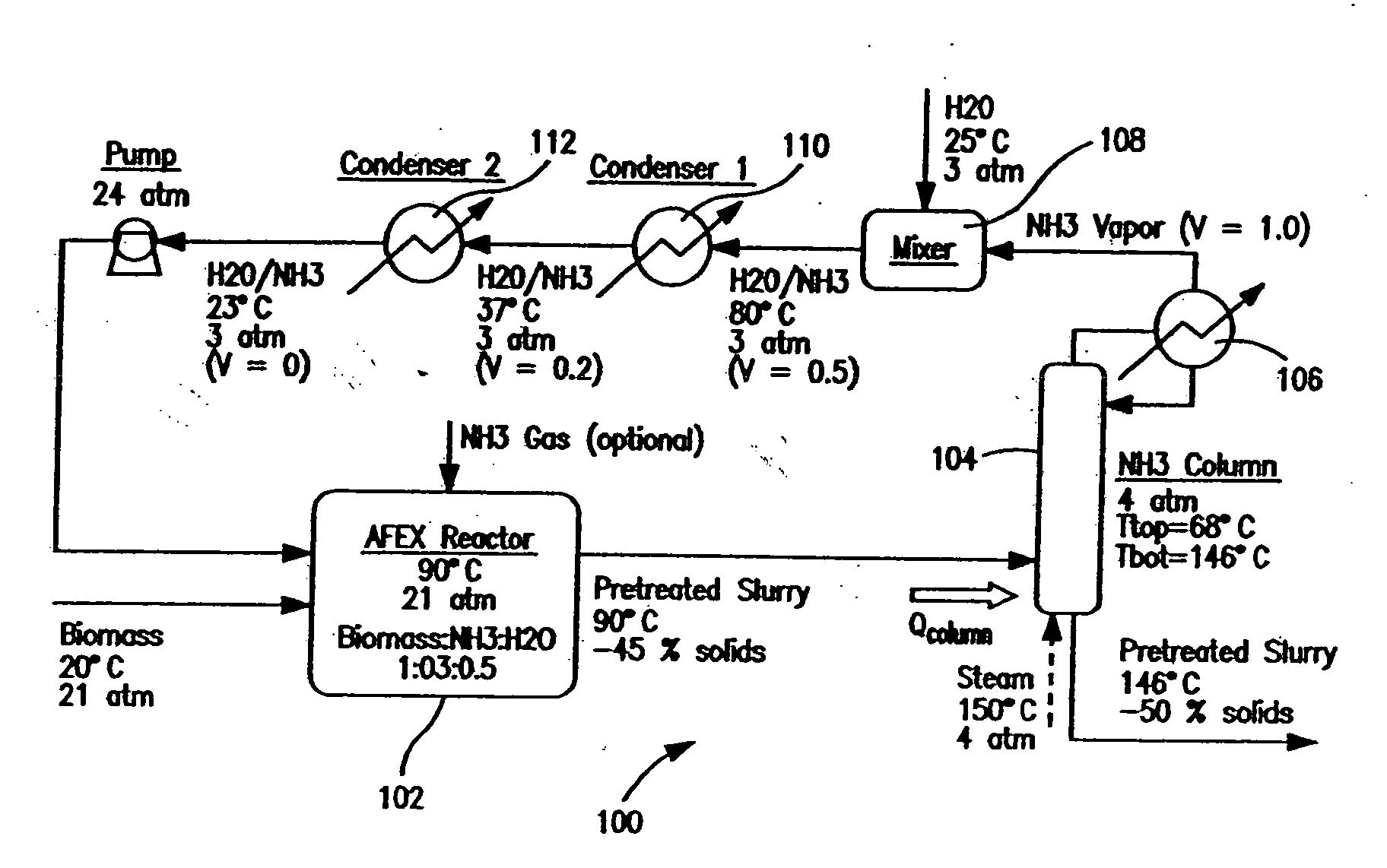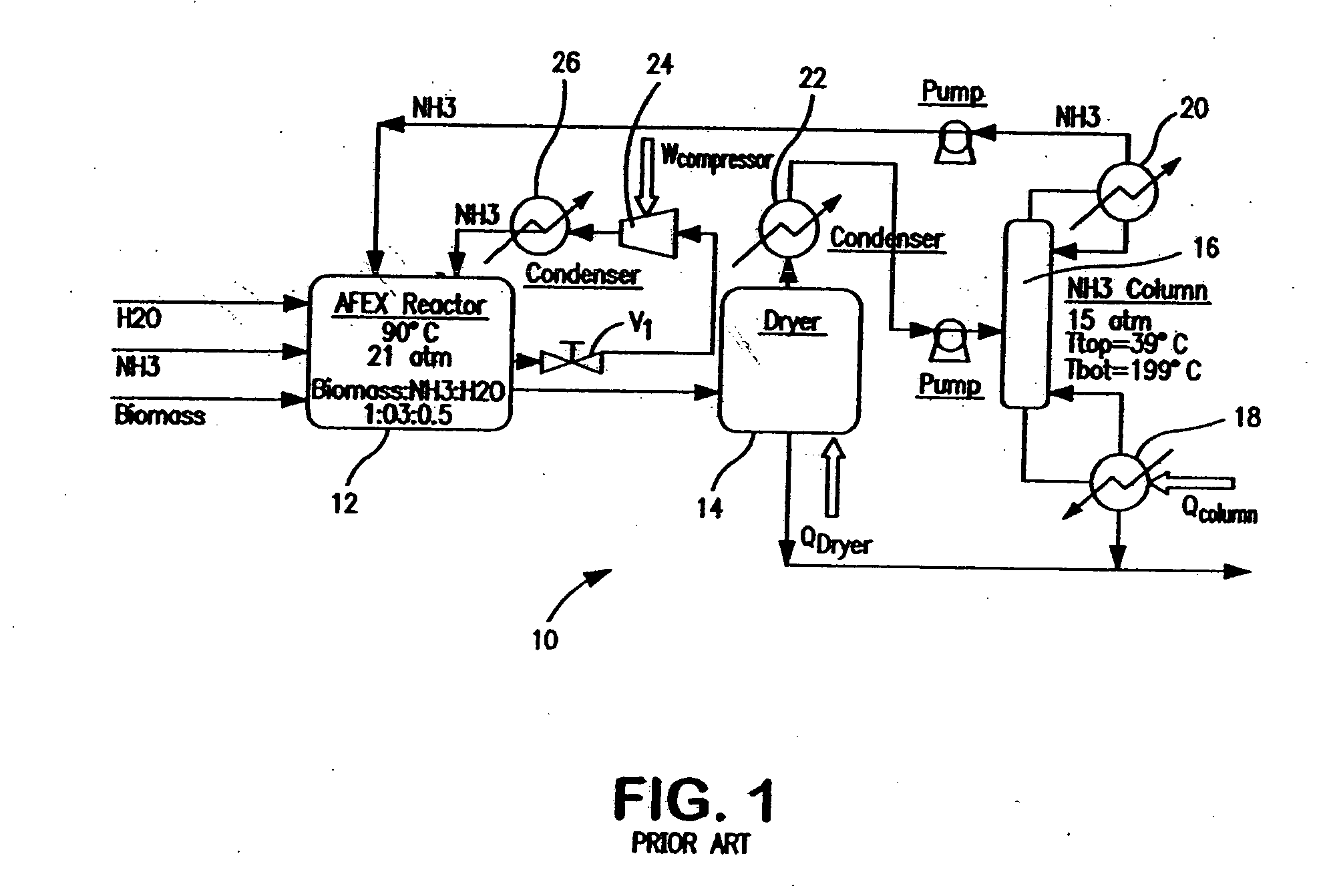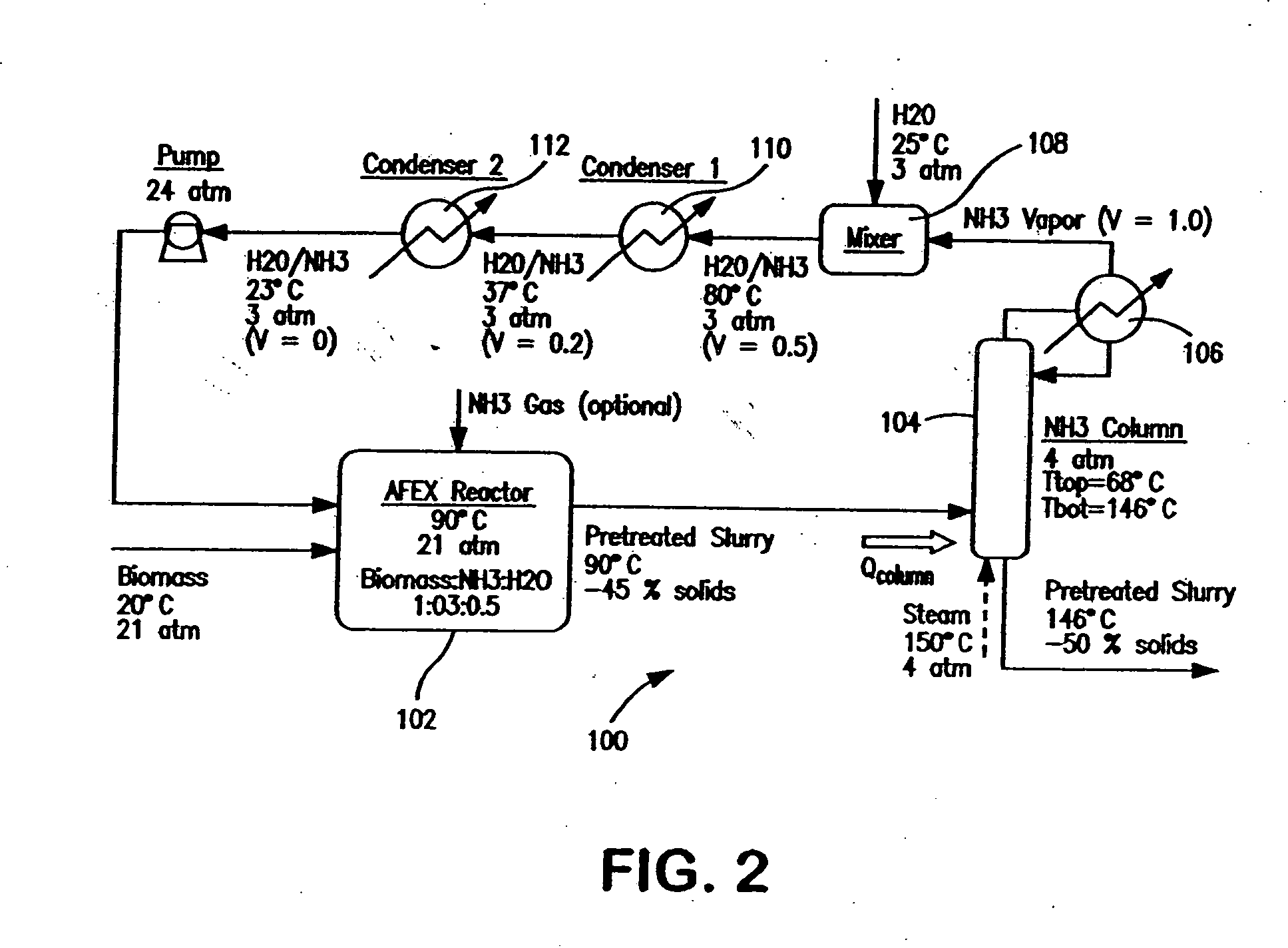Process for the Treatment of Lignocellulosic Biomass
a technology of lignocellulosic biomass and processing method, which is applied in the direction of biofuels, chemical/physical/physico-chemical processes, and glucose production, etc., can solve the problems of reducing yield, difficult to recover these chemicals at reasonable cost, and negatively affecting downstream conversion operations, so as to increase the digestibility and/or accessibility of structural carbohydrates, the effect of rapid release of pressure in the vessel
- Summary
- Abstract
- Description
- Claims
- Application Information
AI Technical Summary
Benefits of technology
Problems solved by technology
Method used
Image
Examples
examples 1 to 20
[0043]A 300 ml pressure vessel 102 was first filled with a given mass of corn stover wetted to the desired moisture level as indicated in Table 1 and the vessel 102 was sealed. Then a concentrated ammonium hydroxide mixture was prepared by mixing the right proportions of anhydrous ammonia and water in another pressure vessel and this mixture was added to the corn stover in the 300 ml reactor vessel 102 to achieve the desired final level of ammonia and water. In this case the target was 1 kg of ammonia per kg of dry biomass and 0.6 kg of water per kg of dry biomass. The mixture of ammonia, water and biomass was then heated to 90° C., held at that temperature for 5 minutes and the pressure rapidly released.
[0044]The resulting solid was hydrolyzed to mixtures of monosaccharides containing, for example, glucose, xylose and arabinose.
[0045]The results of the present invention are shown in Table 1 in Examples 2 to 15.
TABLE 1Glucose and Xylose yields of ammonia treated corn stover after168...
PUM
| Property | Measurement | Unit |
|---|---|---|
| temperature | aaaaa | aaaaa |
| temperature | aaaaa | aaaaa |
| pressure | aaaaa | aaaaa |
Abstract
Description
Claims
Application Information
 Login to View More
Login to View More - R&D
- Intellectual Property
- Life Sciences
- Materials
- Tech Scout
- Unparalleled Data Quality
- Higher Quality Content
- 60% Fewer Hallucinations
Browse by: Latest US Patents, China's latest patents, Technical Efficacy Thesaurus, Application Domain, Technology Topic, Popular Technical Reports.
© 2025 PatSnap. All rights reserved.Legal|Privacy policy|Modern Slavery Act Transparency Statement|Sitemap|About US| Contact US: help@patsnap.com



